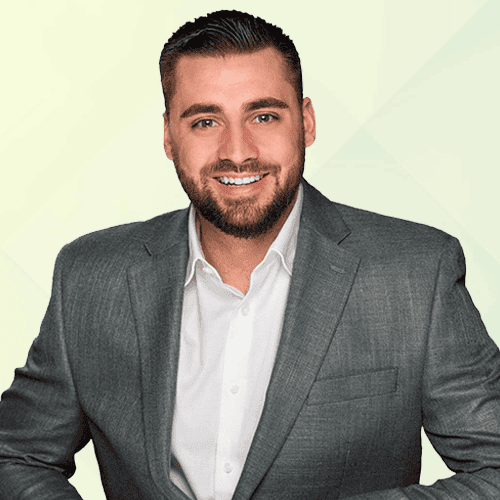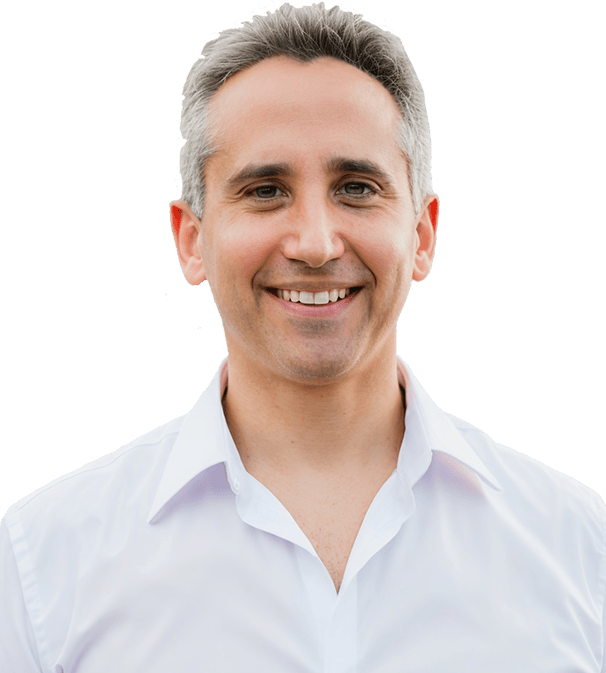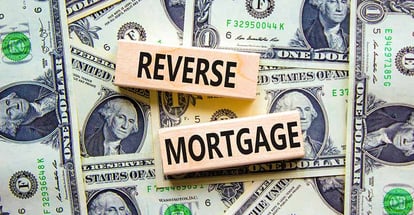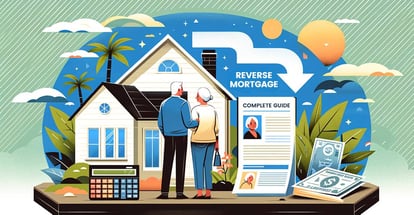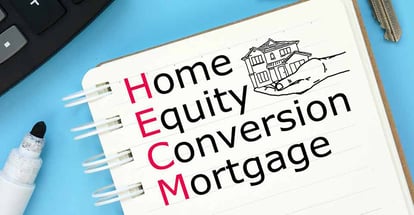Florida Reverse Mortgage Guide With Types and Requirements
If you are a homeowner in Florida who is aged 62 or older and looking for a way to access your home equity, then a reverse mortgage might be the right option for you. However, the process of obtaining a reverse mortgage can be confusing and overwhelming, with many requirements to consider.
In this guide, we will take you through the different types of reverse mortgages available in Florida and the requirements that come with each. We’ll also provide tips on how to avoid scams and ensure that you make the best decision for your financial future.
By the end of this guide, you will have a clear understanding of whether a reverse mortgage is the right choice for you. And if you need further guidance, our team at MakeFloridaYourHome is always here to help.
Table of Contents
- What Is a Reverse Mortgage?
- How a Reverse Mortgage Works
- Types of Reverse Mortgages
- Who Is a Reverse Mortgage Right For?
- What Is Required for a Reverse Mortgage?
- What Are the Costs of a Reverse Mortgage?
- Reverse Mortgage Interest Rates
- How Much Can You Borrow with a Reverse Mortgage?
- Avoid Reverse Mortgage Scams
- How to Avoid Reverse Mortgage Foreclosure
- When Do You Have to Repay a Reverse Mortgage?
- Can You Refinance a Reverse Mortgage?
- Get Help
What Is a Reverse Mortgage?
A reverse mortgage is a loan for homeowners 62 or older with substantial home equity, allowing them to borrow against their home's value. They can receive the loan as a lump sum, monthly payments, or a line of credit.
Unlike traditional mortgages, no repayment is required until the borrower dies, moves out permanently, or sells the home.
The loan amount cannot exceed the home's value, and if it does, mortgage insurance covers any excess, protecting the borrower or their estate.
Key Points
-
Reverse mortgages are for homeowners 62+ with significant home equity.
-
Borrowers receive funds without lifetime repayment obligations.
-
Repayment is deferred until death, permanent move-out, or home sale.
- Federal regulations protect borrowers from owing more than the home's value.
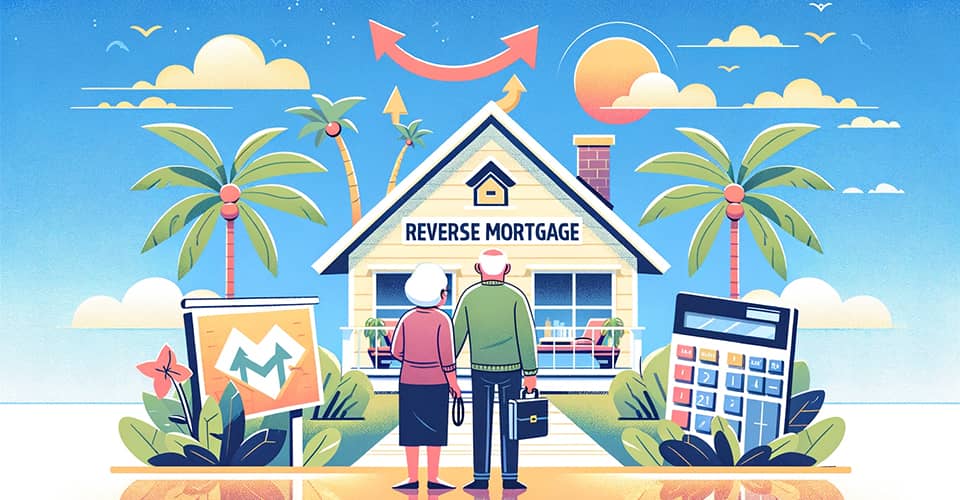
How a Reverse Mortgage Works
In a reverse mortgage, homeowners receive payments from the lender. The method of receiving payments varies, and the homeowner only pays interest on the received amount.
This interest is added to the loan balance, eliminating any upfront payments, while the homeowner keeps the home's ownership. Over time, the homeowner's debt rises, and home equity reduces.
The home serves as collateral. When the homeowner moves or dies, the home's sale repays the reverse mortgage, including principal, interest, mortgage insurance, and fees.
Any surplus from the sale after covering the loan goes to the homeowner or their estate. In some cases, heirs can repay the mortgage to retain the property.
Types of Reverse Mortgages
Reverse mortgages come in three types, the most common being the home equity conversion mortgage (HECM).
Almost all reverse mortgages offered by lenders on home values below the conforming loan limit (which is set annually by the Federal Housing Finance Agency) fall under the HECM category. This is the type of mortgage that will be discussed in this article.
It is also called a Federal Housing Administration (FHA) reverse mortgage and is only available through an FHA-approved lender.
If your home is valued higher than the conforming loan limit, you can explore a jumbo reverse mortgage, also known as a proprietary reverse mortgage.
When obtaining a reverse mortgage, there are six ways to receive the proceeds:
-
Lump sum - Get all the proceeds at once with a fixed interest rate.
-
Annuity (Equal monthly payments) - Lender provides consistent payments as long as one borrower resides in the home, also known as a tenure plan.
-
Term payments - Lender gives the borrower regular payments for a specific time, as the borrower chooses.
-
Line of credit - The homeowner borrows money from the lender as needed, paying interest on the borrowed amounts only.
-
Annuity plus line of credit - Steady payments provided for as long as one borrower occupies the home, while a line of credit is available if additional funds are needed.
- Term payments plus line of credit - The lender gives the borrower regular payments for a specific time, with the line of credit available if needed later.
One can also use a reverse mortgage called "HECM for purchase" to buy a different home than their current one. However, to qualify for a reverse mortgage, the homeowner must typically have at least 50% equity based on their home's current value, not the purchase price.
Who Is a Reverse Mortgage Right For?
A reverse mortgage can provide a lump sum or line of credit similar to a home equity loan or HELOC. However, it differs because you don’t need an income or good credit to qualify, and you don’t make any loan payments while you occupy the home as your primary residence.
This makes a reverse mortgage an attractive option for seniors who:
-
Don't want the responsibility of making a monthly loan payment.
-
Can't afford a monthly loan payment.
- Can’t qualify for a home equity loan or cash-out refinance due to limited cash flow or poor credit.
Other types of loans, such as unsecured personal loans, are available but require monthly repayment and don’t allow seniors to tap into their home equity without selling the home.
What Is Required for a Reverse Mortgage?
There are several requirements you must meet to qualify for a reverse mortgage.
Property Type
You might qualify for a reverse mortgage if you possess a home, condominium, townhouse, or manufactured home constructed on or after June 15, 1976.
However, under FHA regulations, those residing in cooperative housing cannot obtain reverse mortgages since they do not legally own the real estate they inhabit; they hold corporation shares.
In New York, where cooperative housing is prevalent, state law restricts reverse mortgages in co-ops, making them available only in one- to four-family residences and condos.
Age, Equity, and Fees
Even though reverse mortgages do not have any income or credit score requirements, they do have specific criteria for qualification.
The borrower must be at least 62 years old and have significant equity in their home, which could be either owning the home outright or having at least 50% equity in it.
There are additional costs that borrowers will need to pay, such as an origination fee, an up-front mortgage insurance premium, standard closing costs, ongoing mortgage insurance premiums, loan servicing fees (sometimes), and interest.
It's important to note that the federal government has limits the amount lenders can charge for many of these fees.
Counseling
To comply with HUD regulations, all individuals interested in obtaining a reverse mortgage must participate in a HUD-approved counseling session. The counseling session typically lasts for 90 minutes and comes with a fee of approximately $125.
During the session, a counselor will discuss the advantages and disadvantages of taking out a reverse mortgage based on your financial and personal situation.
Additionally, the counselor will clarify how a reverse mortgage may impact your eligibility for Medicaid and Supplemental Security Income (SSI). The various ways to receive the proceeds will also be reviewed.
Collateral Protection
As a reverse mortgage borrower, you must pay your property taxes, homeowners insurance, and homeowners association fees (if applicable) on time and maintain the property in good condition.
You must repay the loan if you are away from the property for more than one year, even for medical reasons, and are no longer using it as your primary residence. Typically, this is done by selling the property.
What Are the Costs of a Reverse Mortgage?
As of October 2017, HUD revised insurance premiums for reverse mortgages. These changes include a standard 2.0% up-front premium for all borrowers, up from 0.5% for most and down from 2.5% for others. This premium is based on the home's value, capped at $6,000, even for higher-valued homes.
Additionally, borrowers are charged annual Mortgage Insurance Premiums (MIPs) at 0.5%, reduced from the previous 1.25%. This reduction saves $750 annually for every $100,000 borrowed, preserving homeowner equity and the potential of leaving the home to heirs.
For a reverse mortgage amount of $200,000:
-
Up-front Premium - 2.0% of $200,000 = $4,000.
- Annual MIP - 0.5% of $200,000 = $1,000 per year.
Thus, the initial cost would be $4,000, with an ongoing cost of $1,000 annually. This structure ensures more of the homeowner's equity is conserved over time, improving the chances of passing the home to heirs.
Reverse Mortgage Interest Rates
The only option with a fixed interest rate is the lump sum (single disbursement) reverse mortgage. This means you'll receive all the proceeds at the time of loan closing.
The other five choices have adjustable interest rates, which makes sense since you'll be borrowing money over many years, and interest rates tend to fluctuate.
These variable-rate reverse mortgages are linked to a benchmark index, often the Constant Maturity Treasury (CMT).
Along with one of the base rates, the lender adds a margin of one to three percentage points. For instance, if the index rate is 2.5% and the lender's margin is 2%, your reverse mortgage interest rate will be 4.5%.
Interest will accumulate over the life of the reverse mortgage, and your credit score won't affect your ability to qualify or the reverse mortgage rate you receive (though it can affect whether the lender may require a Life Expectancy Set Aside account for your property taxes, homeowners insurance, and other necessary property expenses).
How Much Can You Borrow with a Reverse Mortgage?
The borrowing amount in a reverse mortgage is determined by several factors, including the lender, payment plan, and borrower's age.
For a Home Equity Conversion Mortgage (HECM), the limit is based on the younger borrower's age, loan interest rate, and either the FHA's maximum claim amount (currently $970,800 as of Jan. 1, 2022) or the home's appraised value, whichever is lower.
Notably, borrowers can't borrow the full value of their home. A portion of home equity is reserved for loan expenses like mortgage premiums and interest.
Key Factors Affecting Borrowing Amount
-
Age of Youngest Borrower - The older the youngest borrower, the higher the potential loan amount.
-
Interest Rate - Lower mortgage rates allow borrowing more.
-
Home Value - Higher appraisal values increase borrowing capacity.
-
Financial Assessment - A solid financial assessment might increase the amount available to borrow. In such cases, the lender may not reserve funds for property taxes and insurance.
-
Initial Principal Limit - Set by the government and reduced in October 2017, this limit impacts younger homeowners more and aims to protect equity.
- Mortgage Insurance Fund Deficit - Reductions in borrowing limits were partly due to a deficit in this fund.
For lump sum or line of credit options, borrowers can't access the initial principal limit in the first year. Up to 60% (or more for paying off a forward mortgage) is available initially.
In a lump sum option, you receive a one-time amount, while a line of credit grows over time but only if funds remain unused.
Avoid Reverse Mortgage Scams
Reverse mortgages are popular but can attract scams, especially targeting vulnerable seniors. Common scams include:
-
Vendor and Contractor Frauds - Some vendors and contractors target elderly homeowners, offering to help them obtain reverse mortgages for home improvements. However, they may fail to deliver services or steal the funds.
-
Exploitation by Trusted Individuals - Relatives, caregivers, or financial advisors might misuse a power of attorney to secure a reverse mortgage on a senior's home, diverting the proceeds for personal gain.
- Misleading Financial Products - These individuals might also persuade seniors to buy financial products like annuities or life insurance, affordable only through a reverse mortgage. Often, these transactions benefit the advisor, relative, or caregiver, not the senior homeowner.
These scams can inflict significant financial harm on seniors, emphasizing the importance of caution and informed decision-making in reverse mortgage dealings.
How to Avoid Reverse Mortgage Foreclosure
A potential risk associated with a reverse mortgage is the likelihood of foreclosure, which can occur if the borrower fails to meet certain requirements, even though they are not responsible for making mortgage payments.
To prevent foreclosure, reverse mortgage borrowers must live in and maintain their homes. Neglecting upkeep can lead to a decline in the home's value, making it difficult for the lender to recover the full amount of the loan when the home is sold.
Additionally, reverse mortgage borrowers must keep up with property taxes and homeowners insurance to protect the lender's interest in the property.
Failure to pay property taxes can result in the seizure of the home by the local tax authority, while a lack of homeowners insurance could damage the lender's collateral in the event of a house fire.
When Do You Have to Repay a Reverse Mortgage?
The borrower of a reverse mortgage will be obligated to pay back the loan if any of the following events occur:
-
The borrower sells the home.
-
The borrower is absent from the home for a period exceeding one year.
-
The borrower passes away.
-
The borrower fails to maintain the property.
- The borrower stops paying their property taxes or homeowners insurance premiums.
However, certain exemptions to these regulations apply to qualified non-borrowing spouses who wish to continue residing in the home following the death of their borrowing spouse.
Can You Refinance a Reverse Mortgage?
It is possible to refinance a reverse mortgage, but due to its significant costs, it is recommended to do so only in specific situations.
These situations may include the need to add a spouse to the loan, the requirement for more equity, or a substantial reduction in the interest rate.
The costs of origination fees, upfront mortgage insurance premiums, and other closing expenses should be considered before deciding to refinance a reverse mortgage.
Get Help
In conclusion, a reverse mortgage can be a useful tool for some seniors to access their home equity and improve their financial situation in retirement.
However, it's essential to understand the risks and costs associated with this type of loan. If you're considering a reverse mortgage, it's crucial to research and consult a financial professional to determine if it's the right choice for your unique circumstances.
And if you're looking for guidance on reverse mortgages or any other aspect of retirement planning, don't hesitate to contact MakeFloridaYourHome.
Our team of experts can help you make an informed decision and navigate the complexities of the reverse mortgage process.
With over 50 years of mortgage industry experience, we are here to help you achieve the American dream of owning a home. We strive to provide the best education before, during, and after you buy a home. Our advice is based on experience with Phil Ganz and Team closing over One billion dollars and helping countless families.
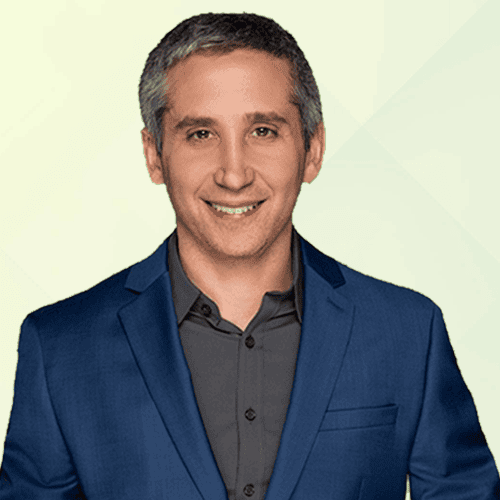
About Author - Phil Ganz
Phil Ganz has over 20+ years of experience in the residential financing space. With over a billion dollars of funded loans, Phil helps homebuyers configure the perfect mortgage plan. Whether it's your first home, a complex multiple-property purchase, or anything in between, Phil has the experience to help you achieve your goals.


 By
By  Edited by
Edited by 

